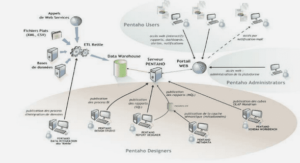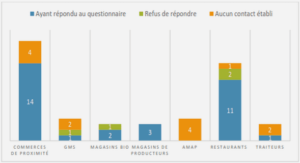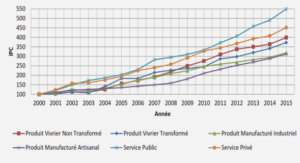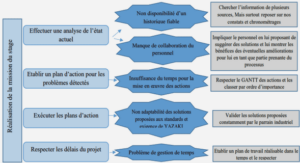Mobility Management
The mobility management algorithms proposed in the literature can be categorized using different parameters. As previously mentioned most of the mobility management algorithms proposed consist of two main steps, which are the handoff management and location management (Li Y. et al., 2012). In the handoff management, the transfer of control from one access point to another is handled. In the location management, the location of the user is updated using different approaches as discussed below. Some of the algorithms handle the location management alone, other algorithms handle the handoff management and some of them studies both issues. We classified the location management approaches into four main classifications, which are:
1) Tunnelling Based approach (TB): in this approach, the location updates are done explicitly by sending a location registration messages to a centralized node such as the gateway. This approach is not suitable for situations where the mesh clients are moving continuously in a dynamic and repetitive way, since it will cause a lot of overhead in the network (Li Y. et al., 2012).
2) Routing Based approach (RB): on the other hand, the routing approach is sending the location update messages implicitly by embedding this information in the header of the regular packet routing. This approach does not incur a high overhead compared to the tunnelling approach, but it is not suitable in situations where the user is moving but not sending any kind of traffic, in this case the location information is not instantly accurate (Li Y. et al., 2012).
3) Hybrid Routing and Tunnelling Based approach (HRTB): in this approach, if the user is moving in a small range, a routing approach is used and no need to send an explicit location update for the gateway. In this scenario, the gateway for example is sending the packets to the old serving mesh router and the old server mesh router knows that the mesh client has moved to a neighbour mesh router, old mesh router will check its routing table to find a forwarding pointer to route all the received packet to the new neighbour serving mesh router. But if a user moves outside a predefined range (bigger range), it means that the forwarding chain is long enough to make extra end-to-end delay. In this specific scenario, a tunnelling approach is used and an explicit location update message is sent to the gateway (Li Y. et al., 2012). 4) Multicasting Based approach (MB): in this approach, groups of mesh routers are formed and managed by special routers. Those special routers will be responsible on forwarding handoff and location information (Zhao et al., 2012).
Other parameters are considered in our mobility management classification, some algorithms are concerned about studying if the mobility is happening in the same domain, which will be shortened as IntraDH ( Intra Domain Handoff), the mobility could also happens between different domains, which will be shortened as InterDH (Inter Domain Handoff) or a mobility management solutions which handle the inter and inter domain mobility. The necessity of IP Address Change (IPAC) of the mobile node is also another parameter we are considering, which is required when the mobile node is moving between different domains. The Number of Handoff Thresholds (NHT) to trigger the handoff, most of the algorithms have one handoff threshold except a solution proposed by (Jesus et al., 2016) which has two handoff thresholds for triggering the handoff. Joint Routing (JR) and Disjoint Routing (DR) for the mobile node is also considered. Multi-Homing Feature (MHF) is also an important parameter which is introduced in our proposed algorithm along with the maximally joint routing to manage the mobility in WMN. A detailed explanation of the mobility management algorithms in the literature are introduced below.
Tunnelling Based Mobility Management Approaches: Since packets of data and packets of handoff signalling are sent on the same backbone channel in single-channel single-radio based WMNs, the channel conflict between data packets and signalling packets often creates long signalling packet queuing delay and channel access delay (Li et al., 2012).Therefore, the performance of handoff is largely determined by the volume of backbone data traffic. Most of existing handoff management solutions do not care about this important issue, in multi-hop WMNs. (Li et al., 2012) proposes scheme to reduce the delay in handoff in WMNs based on single-backbone channel from different viewpoints and a contention-based time division (ConT) scheme to shorten the channel access delay and queuing delay of packets of handoff signalling over multi-hop wireless paths. The proposed methodology separate the data packets and the signalling packets and put them in a different queues. The data and signalling packets are also transmitted in a different times, the authors have specified a time slot for each type of packets. In this way, it is guaranteed that signalling will not be affected by the transmission of the long data packets transmitted in the network. Location update is done by sending the an explicit signalling messages to the gateway.
Nowadays, wireless mesh networks are developing as a quick-and-cheap method for wide wireless coverage. (Wang et al., 2007) proposes a network-based native mobility management technique for wireless mesh networks. When a Mobile Host (MH) connects to a network domain, firstly it focuses on the MAC-layer link with a Routing Access Point (RAP) in the network. By the virtue of this process of association, RAP becomes aware of the MAC address of the network interface card of the MH or, in other words, the MH-ID. As soon as RAP knows the ID, it transmits a message regarding location update with the acquired MHID, to the location server. Location server matches this ID with its database to find whether the MH is newly connected or existing one. If no entry is found, location server recognizes this MH as a new MH. Location server then requests for the assignment of new IP address to this new MH, to the DHCP server. The DHCP server sends a DHCP message following standard DHCP protocol, which contains information regarding newly assigned MH-IP. This MH-IP generally belongs to the same subnet group, within which the MH locates. The Gateway RAP (GRAP) becomes the default gateway. On the other hand, if the location server finds an entry of the MH in its database, it simply updates the location information and sends back an acknowledgement message to the RAP (Wang et al., 2007). Location update is also done in an explicit way by sending a location update message to the location server.
Hybrid Routing and Tunnelling Based Mobility Management Approaches: Authors in (Li Y. et al., 2012) proposed a mobility management scheme named LMMesh (Location Management Mesh), it only handles the location management issue in mobility management and does not solve the handoff management issue. In this scheme, when a mobile node is moving the location management is handled on a different way using a hybrid routing and tunnelling based approach to exploit the advantages of both approaches. If the mobile node is moving in a small range, the number of hops (K) from the old serving mesh router to the new serving mesh router is not long (K <2). In this case the routing based approach is used and a forwarding pointer is embedded in the routing table of the old mesh router to forward all the received packet to the new mesh router. In this way a lot of signalling overhead is avoided. If the number of hops to reach the new mesh router is more than or equal to 2, the tunnelling approach is used and an explicit location update is sent. M3 (Mesh Mobility Management) scheme is introduced by (Huang et al., 2007). The proposed protocol suggests 3 layers hierarchal structure as shown in the figure below. Where the top layer is the gateway, then the Superior Routers (SRs) connected to the gateway and below them are the regular access points. As soon as the mobile mesh clients powers up, a unique IP address is assigned to the mesh client by the gateway after the authentication, authorization and accounting information is done and stored in the gateway and in the mesh client’s serving AP, this caching process in the serving AP is done to avoid the repetitive visits to the gateway database for information lookup. When a mesh client is moving and the signal strength is deteriorating, the handoff is triggered and the client sends a handoff request message to the new AP which contains the information of the old AP. This handoff request message is forwarded to the old AP and all the client’s information is sent back to the new candidate AP.
|
Table des matières
CHAPTER 1INTRODUCTION
1.1Motivation
1.2Problem Statement
1.2.1Handoff and Mobility Management
1.2.2Admission Control
1.2.3Congestion Control
1.3Objectives
1.4Methodology Overview
1.5Thesis Contribution
1.6Thesis Outline
CHAPTER 2RELATED WORK AND BACKGROUND INFORMATION
2.1Introduction
2.2Background on Prediction Algorithms
2.3Related Work on Mobility Management, Congestion Control and Bandwidth
Estimation
2.3.1Mobility Management
2.3.2Congestion Control
2.3.3Bandwidth Estimation
CHAPTER 3MOBILITY MANAGEMENT USING JOINT ROUTING AND ADMISSION CONTROL
3.1Introduction
3.2Our Proposed Mobility Management Algorithm
3.3Problem Formulation and Objectives
3.4Review of Performance Measurements
3.5Markov Decision-based Admission Control and Routing (MDACR)
3.5.1Markov Decision Process Model
3.6System Model
3.7Simulation Results.
CHAPTER 4ADAPTIVE TRANSMISSION PREDICTIVE CONGESTION CONTROL
4.1Introduction
4.2Problem Formulation
4.2.1Variable Order Markov Congestion Prevention (VOMCP)
4.2.2Routing Decision
4.2.3Adaptive Transmission Rate Algorithm
4.3Analysis of the Results
4.4Conclusions
CONCLUSIONS AND FUTURE WORKS
APPENDIX I LIST OF PUBLICATIONS
APPENDIX II LIST OF PUBLICATIONS IN COLLABORATIONS WITH OTHER RESEARCHER
LIST OF BIBLIOGRAPHICAL REFERENCES
![]() Télécharger le rapport complet
Télécharger le rapport complet




